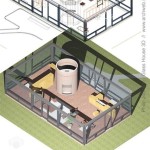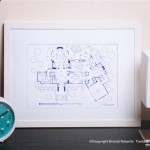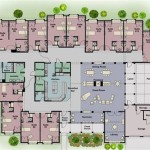Essential Aspects of Traditional Japanese House Floor Plan
Traditional Japanese house floor plans, known as sukiya-zukuri, embody an architectural style that has evolved over centuries. These homes are designed to seamlessly blend with their natural surroundings, creating a harmonious living space that reflects Japanese aesthetics and values. Here are some essential aspects of a traditional Japanese house floor plan:
Open and Flexible Spaces
Traditional Japanese homes feature open and flexible spaces that allow for multiple uses. The main living area, known as the washitsu, is typically a large room with a raised tatami floor and sliding doors that can be opened up to extend the space. Other rooms, such as bedrooms and study areas, are often separated by sliding screens or fusuma doors, allowing for easy reconfiguration and adaptability.
Raised Tatami Floor
Tatami, woven straw mats, are an integral part of traditional Japanese floor plans. The raised tatami floor elevates the living space and provides a comfortable and naturally insulating surface. The number and arrangement of tatami mats determine the room's size and can be used to define different functional areas within the room.
Engawa and Verandas
Enclosed verandas, known as engawa, are a distinctive feature of traditional Japanese homes. They extend from the main living areas and serve as a transition zone between the indoors and outdoors. Engawa offer a shaded area for relaxation and contemplation, and they often provide views of the garden or surrounding landscape.
Tokonoma and Shoin
Tokonoma is an alcove in the main living area that is used for displaying artwork, flowers, or other decorative items. It is typically located near the entrance and serves as a focal point of the room. Shoin is a writing desk or study area that is often incorporated into the tokonoma alcove, creating a dedicated space for contemplation and creative pursuits.
Natural Light and Ventilation
Traditional Japanese house floor plans emphasize natural light and ventilation. Sliding screens and paper doors allow for ample daylight to enter the rooms, while open spaces and high ceilings promote air circulation. This emphasis on nature and natural elements creates a sense of tranquility and well-being within the home.
Connection to Nature
Traditional Japanese homes are designed to seamlessly connect with the natural surroundings. Gardens, courtyards, and water features are often incorporated into the floor plan, creating an extension of the living space into the outdoor environment. This connection to nature fosters a sense of peace, harmony, and a deep appreciation for the beauty of the natural world.

Traditional Japanese House Floor Plan Google Search Plans

Typical Home Layouts Differences Between Japan And Abroad

Traditional Japanese Home Floor Plan Cool House Plans Ideas Des Architecture Style

Hachidori Floor Plan Traditional Japanese House Japan Design Home Plans

The Layout Of Ground And First Floor A Traditional Japanese House Scientific Diagram

Traditional Japanese House Floor Plans With Drawings Upgradedhome Com

Japanese Home Design Ideas Pictures 331 Sqm Homestyler

The Floor Plan Of Apartments In Japan Japanese Home Archi Designer

Traditional Japanese Architecture Tea Ceremony Japan Experiences Maikoya
What Do The Blueprints Of A 1 Floor Traditional Japanese House Look Like Quora
Related Posts








